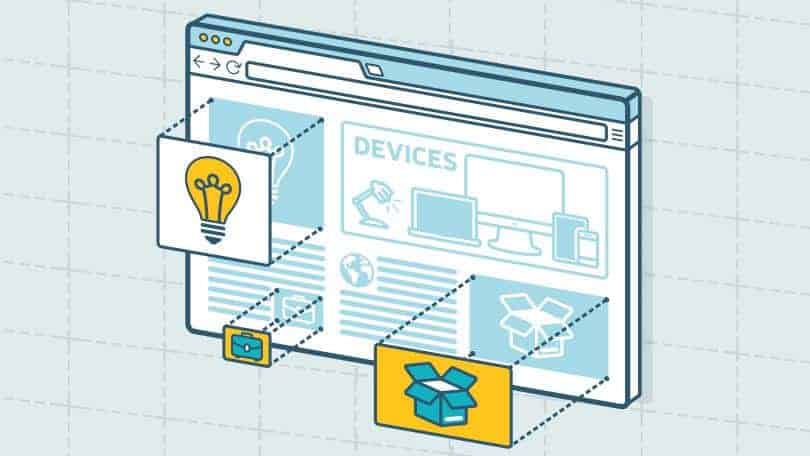You’ve heard it over and over again: every business needs a website. You might have a website that isn’t quite working for your business, or this might be your first website project. You’ve done a little research on DIY website platforms, but you feel overwhelmed and have no idea where to start. You need serious help, but your business is still relatively new and you’re not yet in a position to hire a professional.
Sound familiar?
Your business can have an effective online presence without spending big bucks on a professional. If you’re just starting out in your business, there’s no need to spend thousands of dollars on something that isn’t going to make a huge difference in your business just yet.
Creating your own website is a great way to save those marketing dollars for when your website really matters; when you’re starting to get substantial online traffic and your DIY website just isn’t holding up.
Before you jump right into designing a website, it’s important to have a game plan for what you want to create. By following some basic website design tips, you can create a website that looks professional and converts visitors into customers for your business.
Research Your Industry
Every project should start with a research phase. I know it can be exciting to just jump into that website editor and start designing away, but trust me: the research phase is one of the most important aspects of any design project.
Take a look at the websites of some of your direct competitors and leaders in your industry. Don’t limit this to just your local area — you want to get a feel for what other businesses in your industry are doing to become successful.
Take notes of what you like and dislike about each website you come across. What information do they all display on their websites? Screenshot websites or design elements that you like and save them to a folder for inspiration.
This does not mean copy other businesses’ websites! This is strictly for inspiration.
Evaluate Your Own Website
Take a look at your own website and evaluate what you like and dislike about it. What are your website’s pain points? What do you need to improve on?
Talking to current or past customers is a great way to learn how your customers feel about your website. Ask them to give you their input on your current website and what you could do to make it more effective.
Website Grader is a great tool that evaluates the technical aspects of your website like page load speed, responsiveness, and search engine optimization. Enter your website’s URL to get a report of what you need to improve!
Start With A Plan
Now that you know what you want to improve on, it’s time to create a plan for your new website.
You should always start every project with a clear set of goals. Start with your overall business goals: what are your long- and short-term goals for your business? Next, evaluate and create a plan for how your website fits into those goals. For example, if you want to increase your revenue from a specific service by 10%, your website goal could be to generate X amount of inquiries for that service from your website.
Write out your goals and keep them in a place that is easy to reference. Whenever you’re making a design decision about your website, your goals should be the first thing you look at. Each element of your website needs to relate to your goals in some way.

Plan Your Content
The next step is to plan your website content. Refer back to your goals, input from customers, and inspiration from other businesses’ websites. What information does your website need to display for your customers?
If you need new photos for your website, take those before you proceed with your website. A smartphone and good lighting can go a long way when trying to make your photos look professional.
It’s important to plan your website design around your content instead of creating your content to fit a certain website theme. The content is THE most important part of your website; don’t limit the information you provide to your customers just because the theme you chose doesn’t have room to display what you need. Have your content ready to go before you choose a theme for your site.
Focus On What You Can Do For Customers
Your website content should always focus on the benefit you provide for your customers. Think about why people do business with you. For example, a photographer doesn’t provide photos for their clients. They capture memories that their clients can look back on and remember what life looked like in that specific moment.
Customer-focused content always centers around what you can do for your customers. Look at each sentence in your content and see how many times you use the word “I”. Try to speak directly to your customers and replace “I” sentences with “you” when possible.
Choose Your Platform
It’s now easier than ever to create your own website for your business. There are tons of DIY website platforms available that boast how easy it is for their customers to create and launch a website, but it’s important to choose the right one for your business.
Out of all of the available platforms, there are only three that I would ever recommend to my clients:
- WordPress
WordPress is what I primarily use for my websites. It offers the most customization out of all of the website platforms and currently powers 30% of the web. Everything from small-town businesses to Fortune 500 companies use WordPress for their websites. If you’re going the DIY route, you can pair WordPress with a drag-and-drop website builder to easily design a website for your business. If you think your website is going to substantially grow in the future, WordPress is the best option for you. - Squarespace
Squarespace is another great option for small businesses. It offers less customization than WordPress, but has less of a learning curve. It is extremely easy to set up and has a built-in drag and drop website builder that can have your website up and running quickly. If you value ease of use over room to grow, Squarespace is the way to go. - Shopify
If you plan on selling things online, Shopify is probably your best option. I don’t personally have experience with Shopify, but it seems to be very user-friendly and is very popular with e-commerce businesses, which is who the platform was created for.

Make Sure Your Site Is Responsive
The biggest mistake you can make with your website is not creating something that is easy to use on a mobile device. When choosing a theme for your website, make sure that it’s easy to use and navigate from your phone. With over 50% of website traffic coming from mobile devices, you’re leaving money on the table if your website isn’t mobile-friendly.
Keep It Simple
Most small business owners go overboard when designing their own websites. Keep in mind that your DIY website is not going to look like something that a company spent £10,000 on. The goal of your website should be to display information as easily and effectively as possible.
You always want to keep colors and fonts to a minimum. Create a simple color palette and choose 1–2 fonts that go together well. Always use Google Fonts for your website, and you can check out fontpair.co to see what fonts work well together.
White space is your friend! You don’t want your customers to feel overwhelmed when they read through your website. Split your content into paragraphs and use white space to separate sections of your page. You want everything to stand out and be easily readable.
Make It Easy For Customers To Contact You
Your customers should never wonder how to contact you from your website. You should always include a contact page with a contact form, your primary contact information (email and/or phone number), and any social media links. If your business has a physical address, include it along with a Google map and/or directions.
Your contact information should also be visible on each page. Your website’s footer is a great place to put your primary contact information, social media links, and a link to your contact page.
Use Calls To Action To Accomplish Your Goals
Remember those goals we discussed at the beginning? Each page of your website needs a call to action to accomplish those goals. Your website visitors need to be told what you want them to do; don’t leave them wondering what their next step should be. For example, if you’re trying to get people to fill out your contact form, you should have a link to that form on each page.


